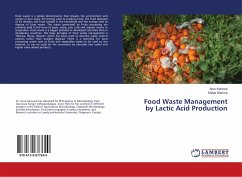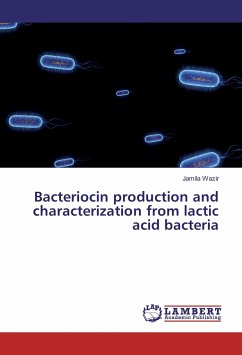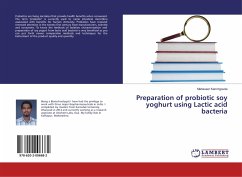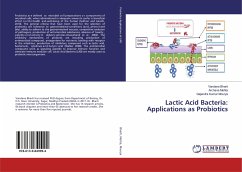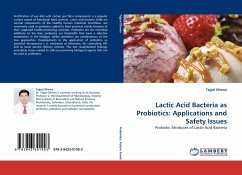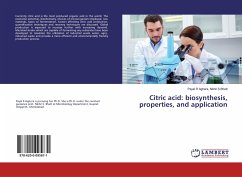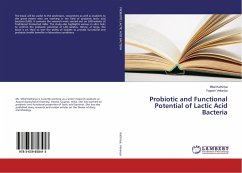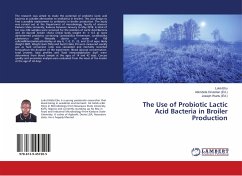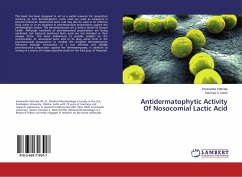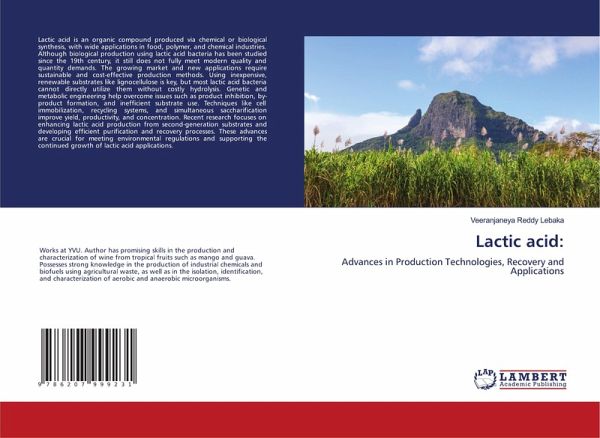
Lactic acid:
Advances in Production Technologies, Recovery and Applications
Versandkostenfrei!
Versandfertig in 6-10 Tagen
29,99 €
inkl. MwSt.

PAYBACK Punkte
15 °P sammeln!
Lactic acid is an organic compound produced via chemical or biological synthesis, with wide applications in food, polymer, and chemical industries. Although biological production using lactic acid bacteria has been studied since the 19th century, it still does not fully meet modern quality and quantity demands. The growing market and new applications require sustainable and cost-effective production methods. Using inexpensive, renewable substrates like lignocellulose is key, but most lactic acid bacteria cannot directly utilize them without costly hydrolysis. Genetic and metabolic engineering ...
Lactic acid is an organic compound produced via chemical or biological synthesis, with wide applications in food, polymer, and chemical industries. Although biological production using lactic acid bacteria has been studied since the 19th century, it still does not fully meet modern quality and quantity demands. The growing market and new applications require sustainable and cost-effective production methods. Using inexpensive, renewable substrates like lignocellulose is key, but most lactic acid bacteria cannot directly utilize them without costly hydrolysis. Genetic and metabolic engineering help overcome issues such as product inhibition, by-product formation, and inefficient substrate use. Techniques like cell immobilization, recycling systems, and simultaneous saccharification improve yield, productivity, and concentration. Recent research focuses on enhancing lactic acid production from second-generation substrates and developing efficient purification and recovery processes. These advances are crucial for meeting environmental regulations and supporting the continued growth of lactic acid applications.



